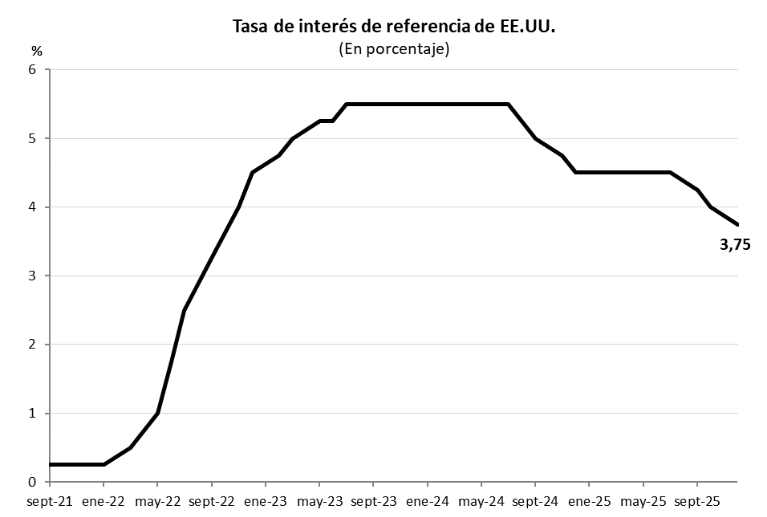Morning View
Stock indexes traded mixed after the Fed's interest rate cut
International
On Thursday, the main US stock indices moved in different directions after the Federal Reserve decided to cut the benchmark interest rate by 25 basis points. The S&P 500 advanced +0.2%, the Nasdaq fell -0.3%, and the Dow Jones was the biggest gainer, up +1.3%. So far in 2025, the indices have accumulated gains of +17.3%, +22.2%, and +14.5%, respectively.
In turn, US Treasury bond yields remained virtually unchanged after Wednesday's movement. The 1-year bond closed at 3.55%, unchanged from Wednesday, the 3-year bond also remained at the same level of 3.59%, and the 10-year bond yield rose slightly from 4.15% to 4.16%.
In terms of companies, Broadcom and Costco reported their third quarter 2025 results yesterday. Broadcom reported earnings per share (EPS) of USD 1.95 (vs. USD 1.87 expected) and revenue of USD 18.02 billion, also above the USD 17.45 billion expected. Costco reported EPS of $4.5 (vs. $4.28 expected) and revenue of $67.31 billion (vs. $67.08 billion expected).

Sources: PUENTE Hnos, Bloomberg

The Federal Reserve cut the benchmark interest rate by 25 basis points
International
Yesterday afternoon, the US Federal Reserve announced its decision to cut the benchmark interest rate by 25 basis points, with 9 votes in favor and 3 dissenting votes, placing it in the 3.50%-3.75% range. During the press conference, Fed Chairman Jerome Powell highlighted the strength of the US economy and the progress made in controlling inflation in services, while goods have been affected by tariffs, a situation they consider temporary in their baseline scenario. In its updated macroeconomic projections, the Fed revised its growth estimates upward, while inflation was revised downward. With regard to interest rates, estimates of one cut in 2026 and another in 2027 remain unchanged.
In this context, the main US stock indices reacted positively. The S&P 500 advanced +0.8%, the Nasdaq +0.3%, and the Dow Jones +1%. So far in 2025, the indices have accumulated variations of +17.2%, +22.5%, and +13%, respectively.
Meanwhile, US Treasury bond yields compressed. The 1-year bond closed at 3.55% from 3.62% previously, while the 3-year bond compressed to 3.58% from 3.65% previously. The 10-year bond ended at 4.15%, down from 4.19% on Tuesday.

Sources: PUENTE Hnos, Bloomberg

